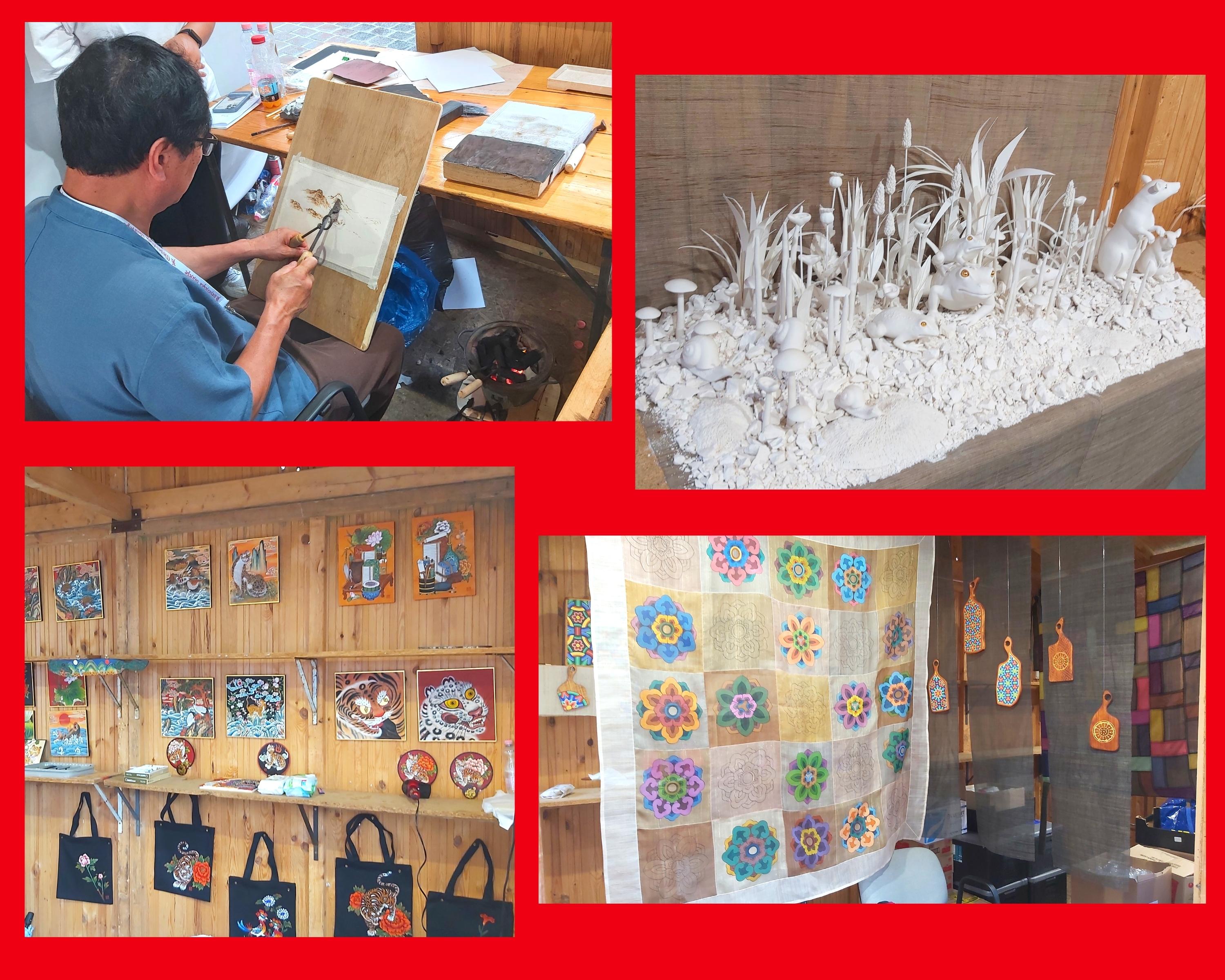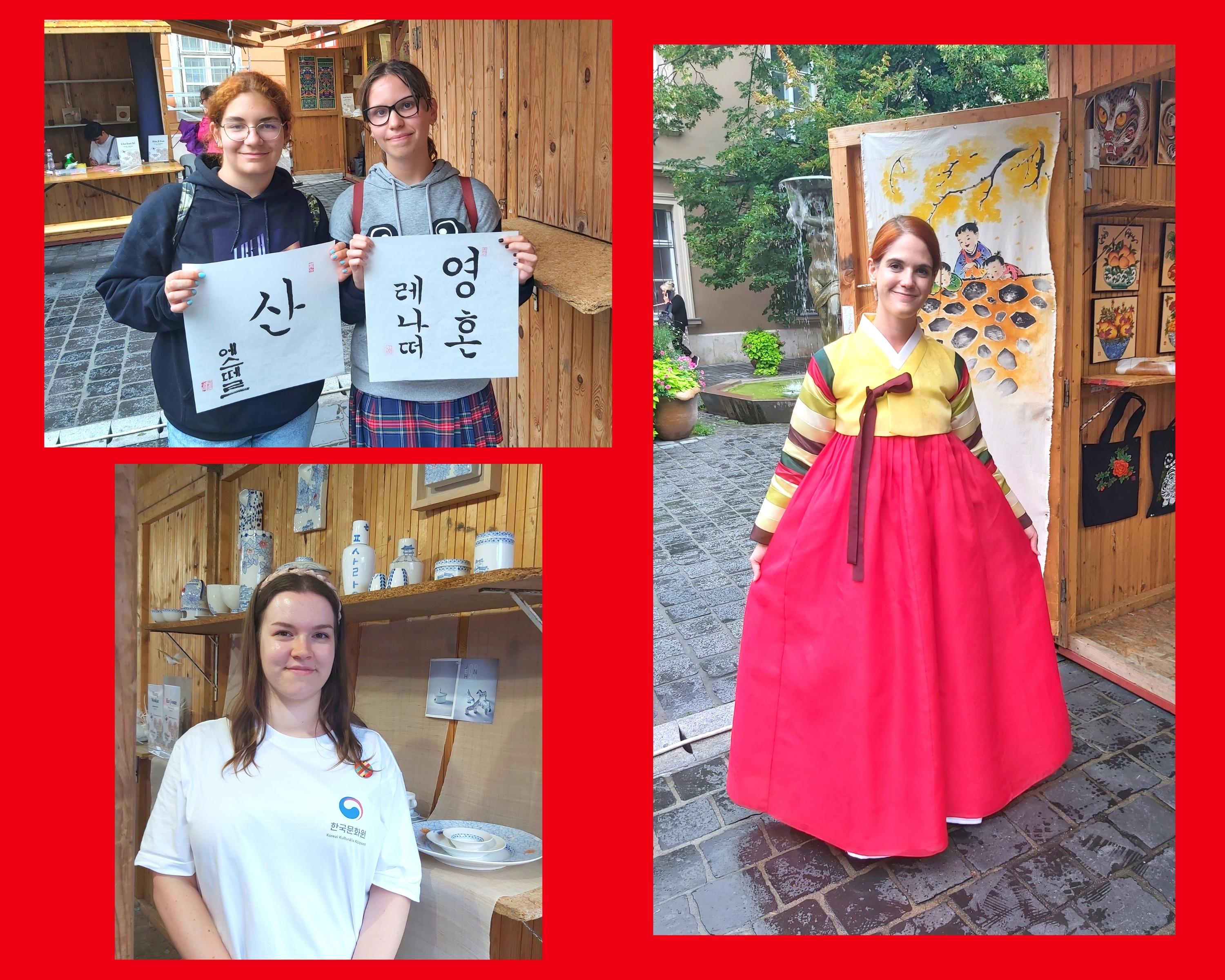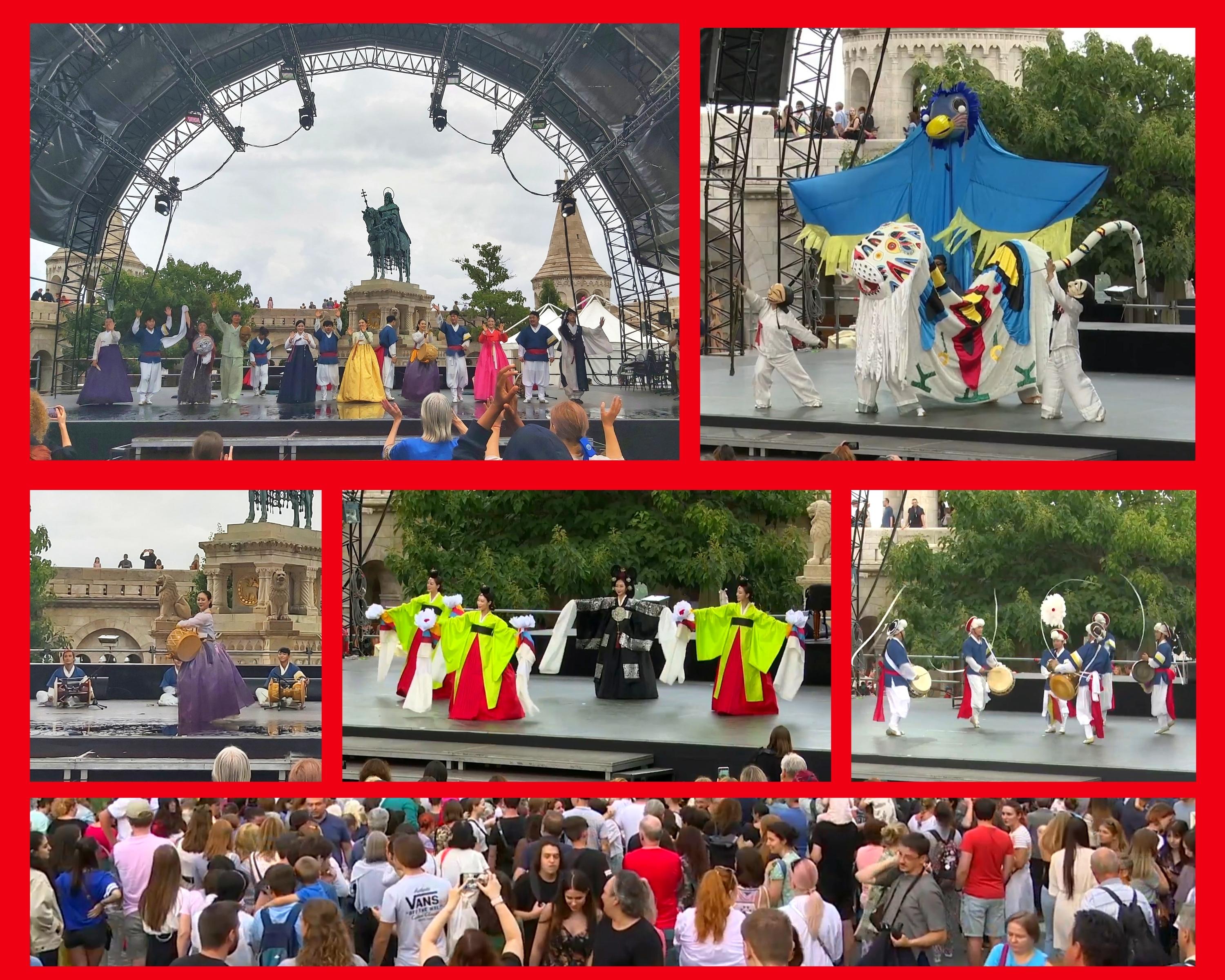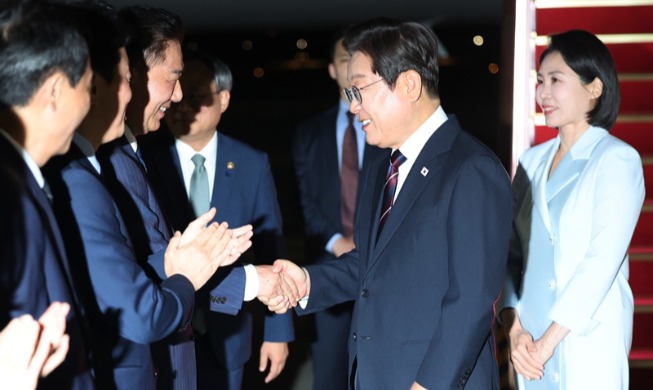- 한국어
- English
- 日本語
- 中文
- العربية
- Español
- Français
- Deutsch
- Pусский
- Tiếng Việt
- Indonesian
By Honorary Reporter Marianna Szucs from Hungary
Photos = Korean Cultural Centre in Budapest and Marianna Szucs
Every August, Hungary holds its biggest event for culture and arts, the Festival of Folk Arts. Held from Aug. 19-21, this year's event featured Korea as the guest country of honor to mark the 10th anniversary of the Korean Cultural Center (KCC) in Budapest.
Nine masters of traditional arts and crafts from Korea attended the event. Kim Su-yeon showed jogakbo (traditional patchwork) and dancheong (traditional decoration on wooden buildings). Kim Yeong-jo and Kim You-jin displayed hakhwajang (pyrography), or the art of burning images on Hanji (traditional paper) with heated metal. Kim Kyeong-aye displayed minhwa (traditional folk painting) while visitors could paint their own.
Traditional calligraphy was displayed by Moon Chang-suk, who spent all day showing his craft at the festival. Han Joo-eun and Maeng Wook-jae introduced doye (traditional ceramics) through their elegant white and blue porcelains and a workshop in which participants decorated small plates.
Cho Eun-sil and Shin Ji-eun showed jiseung (traditional paper weaving using Hanji) and displayed everyday objects made through the craft. This was especially interesting to me as I visited a Hanji exhibition a few weeks ago at the KCC in London.

Pyrography (clockwise from left), doye, minhwa and jogakbo attracted crowds at the festival.
Eszter Farkasreti and Renata Varga showed their gifts from the calligraphy booth. On each Hanji sheet was a character in Hangeul calligraphy along with their first names.
Adriana Sara Popa, a volunteer at the festival's booths, said she got to meet the masters and other prominent guests at the festival's Korean section such as Hungarian President Katalin Novak and former President Pal Schmitt.
Alexandra Urban, an interpreter for the Korean section, wore the traditional attire Hanbok and provided useful information about other programs at the festival.

Eszter Farkasreti and Renata Varga pose with their gifts from the calligraphy booth. Adriana Sara Popa (lower left corner) and Alexandra Urban in Hanbok both worked at the festival's Korean section.
Traditional Korean performing arts featuring colorful costumes and masks as well as a Hanbok fashion show were shown.

The main stage offers colorful and lively traditional performing arts from Korea.
The KCC in Budapest livestreamed the event with two hosts who interviewed the craft masters. Jiseung master Cho surprised the audience with a traditional Korean fan partially made from used Hungarian leaflets and Hanji.
And of course, no event about Korea is complete without Hansik. Among the Korean foods featured were tteokbokki (spicy rice cake), japchae (stir-fried glass noodles and vegetables) and gimbap (seaweed rice rolls).
The many people I spoke to about the event said they were genuinely impressed with the friendliness and professionalism of the Korean artists and masters.
enny0611@korea.kr
*This article is written by a Korea.net Honorary Reporter. Our group of Honorary Reporters are from all around the world, and they share with Korea.net their love and passion for all things Korean.
Most popular
- Military discharge sets stage for reunion of all 7 BTS members
- 'We are back!' BTS Festa heralds hyped return of K-pop phenom
- Presidents Lee, Trump discuss tariff deal in first phone talks
- Method found to boost removal of waste products from brain
- President's 1st executive order is launch of economic task force
